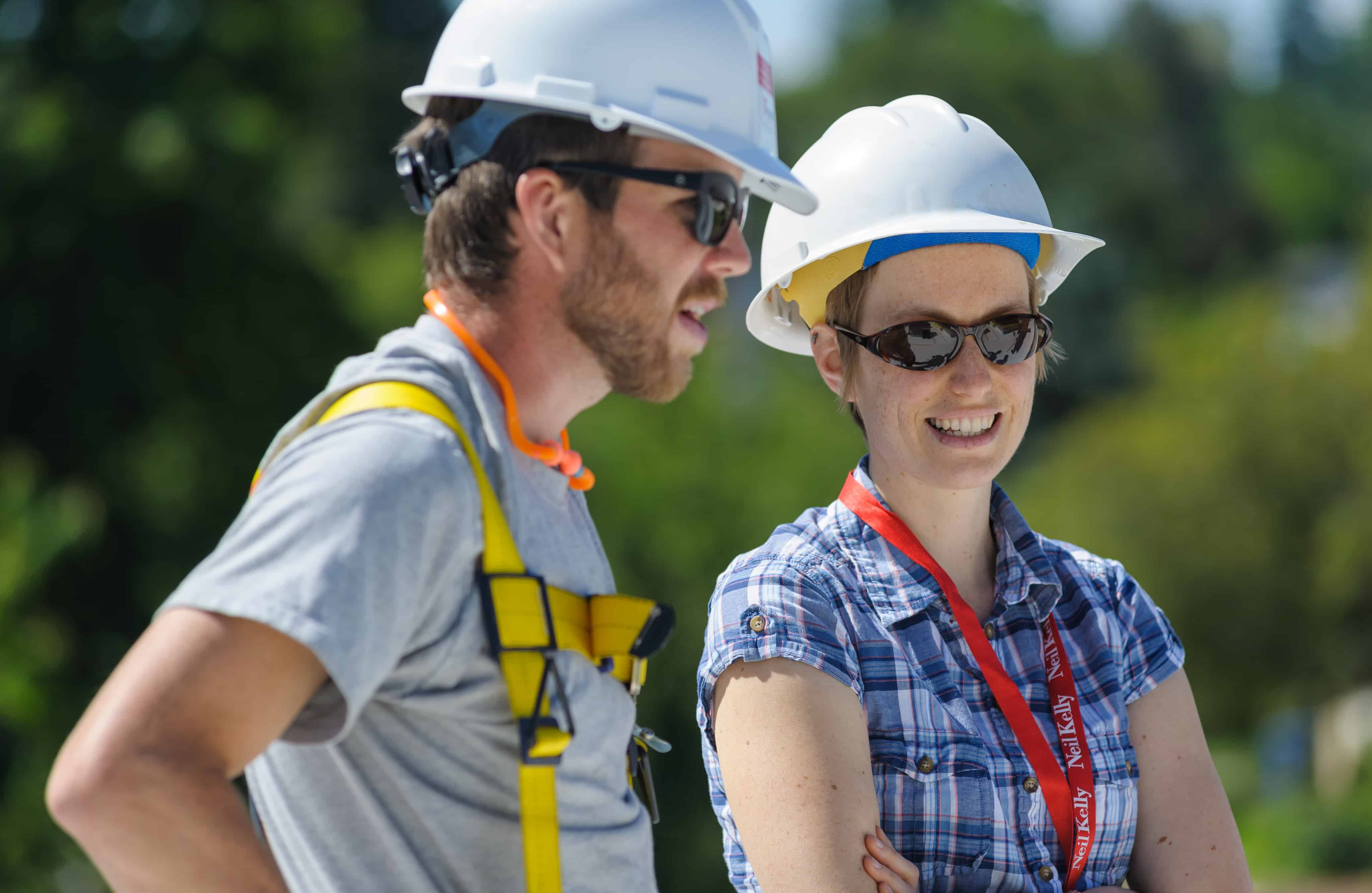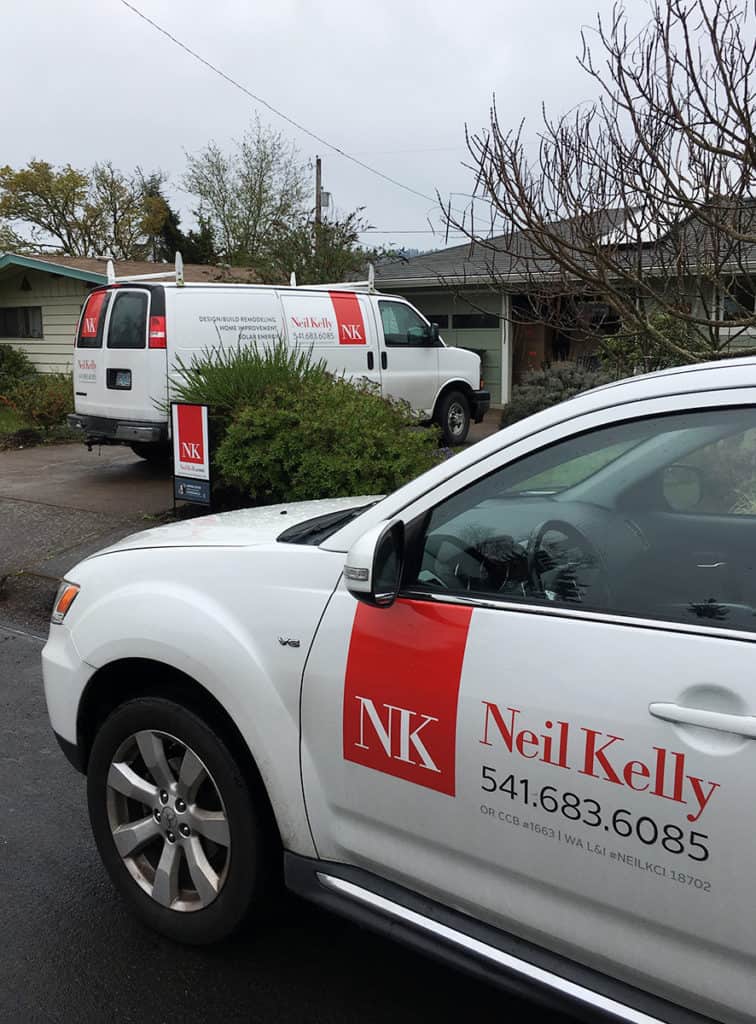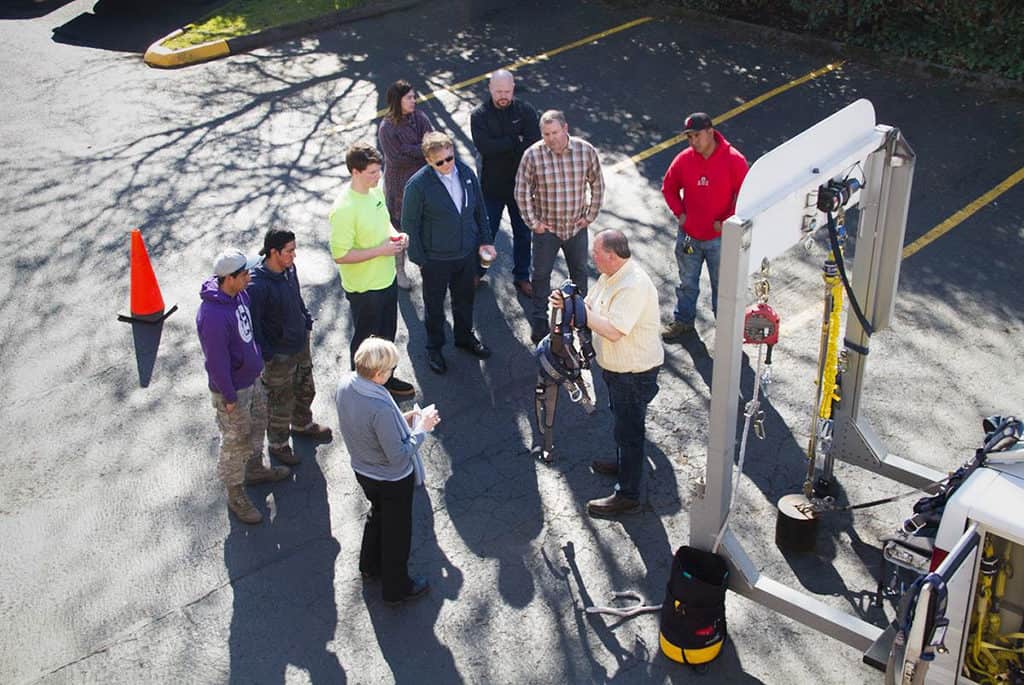
News
Safety A Feature Of Every Neil Kelly Project
In 2017, Neil Kelly Company won an award from the National Association of Home Builders: Remodeler Safety Program of the Year. While attention to safety is nothing new at Neil Kelly, the award shined a light on decades of work undertaken by dedicated teams and individuals.
“We are committed to safety for our employees and our clients,” says Neil Kelly President Tom Kelly. “I learned that lesson years ago when we had a serious accident and realized safety wasn’t built into our culture. We went about it in a very serious way to change that, and safety is now a key component at Neil Kelly.”
As part of that culture, here are four ways Neil Kelly keeps employees and clients safe on the job site.
Job Site Signage
It may sound like a simple step, but on all multi-day job sites, Neil Kelly has internal signage specific for each project. It goes in the home, designating the area as a construction zone, and it has tips for workers and homeowners like “Don’t walk barefoot in this area.”
The signs are multi-purpose: homeowners benefit from the reminder, but “it’s also targeted at our trades because it provides an emergency contact if something should go awry,” says Safety Coordinator Lisa Pickert.

Above: Highly visible job site signs and vehicle graphics keep people informed about construction work being done on a property and who to call if something goes wrong.
Annual Trainings and Background Checks
Neil Kelly carpenters get annual training on safety-related topics. Every quarter, equipment gets inspected to make sure it’s in good working condition, specifically electrical cords. During these inspections, other items that contribute to worker safety are checked as well. For example, do employees have all their personal protection equipment like safety glasses, hearing protection, and hard hats?
“We also ask our field personnel to wear their Neil Kelly badges — those badges assure the customer that they’re a Neil Kelly employee,” says Pickert.

Above: A Neil Kelly construction team receives a training course on safety harnesses. Such courses are an ongoing part of Neil Kelly’s safety certification process guided by Lisa Pickert.
Checking in: A Three-Step Process
Periodic job site visits are performed for a second — or in this case a third set of eyes. Carpenters perform the first round of safety checks while on site. Then the project manager visits to inspect for safety issues and ensure things are on schedule. Lastly, a safety coordinator like Pickert randomly inspects job sites, often without notice, to ensure that things are set up correctly, being done safely, and that workers are wearing eye and hearing protection.
“We actually have a very good success rate with that. I don’t often find serious omissions. Sure, there’s always room for improvement, and I have conversations with our crews, but it’s pretty infrequent that I find problems,” says Pickert.
Trained for Emergencies
Field personnel, carpenters and project managers are required to be certified in first aid and CPR, and know how to use an automated external defibrillator (AED) at the office. For every multi-day project, Neil Kelly provides a five-pound fire extinguisher that sits on the job site, in addition to a two-and-a-half-pound extinguisher that carpenters are responsible for maintaining in their vehicle. This not only keeps the job site safe, it also keeps employees safe in case of an emergency.
“We want to have the safest job site as possible for our employees — and for our clients,” adds Kelly.
READ MORE: Dust Be Gone!
Whether it’s a kitchen remodel, new bathroom or a new deck, Neil Kelly takes safety seriously on the job site. See how the Neil Kelly difference can make your next remodeling job shine. Get in touch!